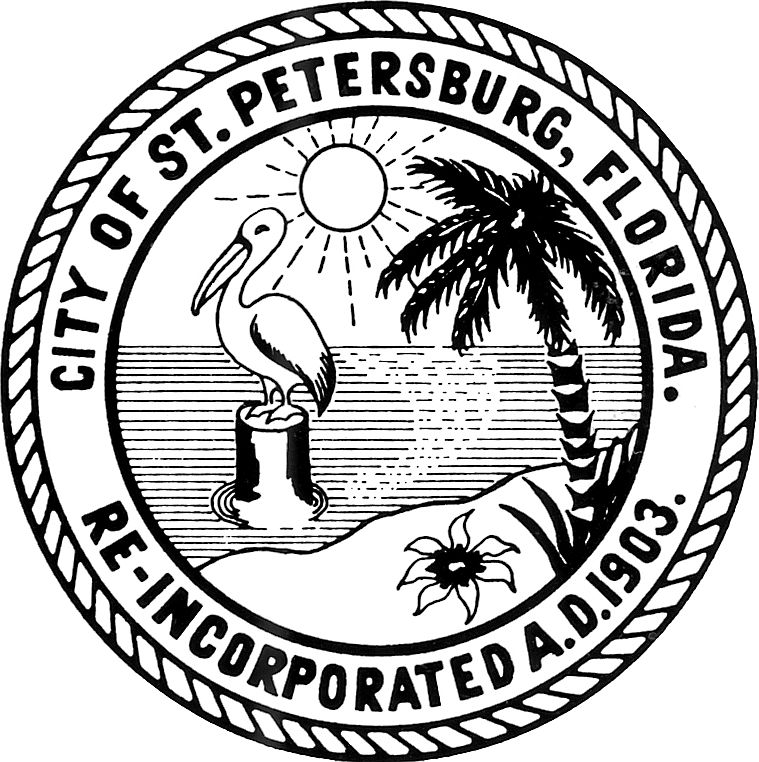Mesothelioma: The case of Saint Petersburg, Florida
Posted on Wednesday, September 7th, 2016 at 4:38 pm
Mesothelioma: The case of Saint Petersburg, Florida
Saint Petersburg is located on a point between Tampa Bay and the Gulf of Mexico. The city is also known by the following terms; Saint Pete, The Burg and the Sunshine City. Saint Petersburg is called the Sunshine City as it enjoys almost three hundred and sixty (360) days of sunshine. As a result the city became a popular retirement destination.
It was cofounded by John C. Williams, who bought the land in 1876 and by Peter Demens who brought the Orange Belt

Seal of Saint Petersburg, Florida
railroad terminus to the city in 1888. In 1899, Harry W. Hibbs established a wholesale fishery business in the city. The wholesale fish business was located at the end of the railroad pier; this pier extended into the shipping channel. As a result of the business location, within a year, Hibbs Fish Company was shipping some one thousand pounds (1000lbs) of fish a day.
The Florida land boom of the twentieth (20th) century brought about the construction and development of hotels and bridges in the city. However, during World War II, the United States Air Corps used the hotels to station its troops.
Florida Power Corporation was established in 1927; and power and utility became the backbone of the city’s economy. Florida Power Corporation expanded and became one of the largest utility holding companies of the twentieth (20th) century.
Asbestos Exposure
Saint Petersburg has many job sites where asbestos exposure took place. These job sites led to the asbestos exposure of workers and tradesmen alike and resulted in mesothelioma, asbestosis or asbestos related illnesses. One such job site is Bartow Power Plant.
Other job sites have been identified as harboring asbestos containing materials. Such job sites include but are not limited to:
- First Federal Savings and Loan Association
- Walters Jim Research Lab
- Saint Petersburg Powerhouse
- Paul L. Bartow Power Plant
- Bay City Engineering Inc.